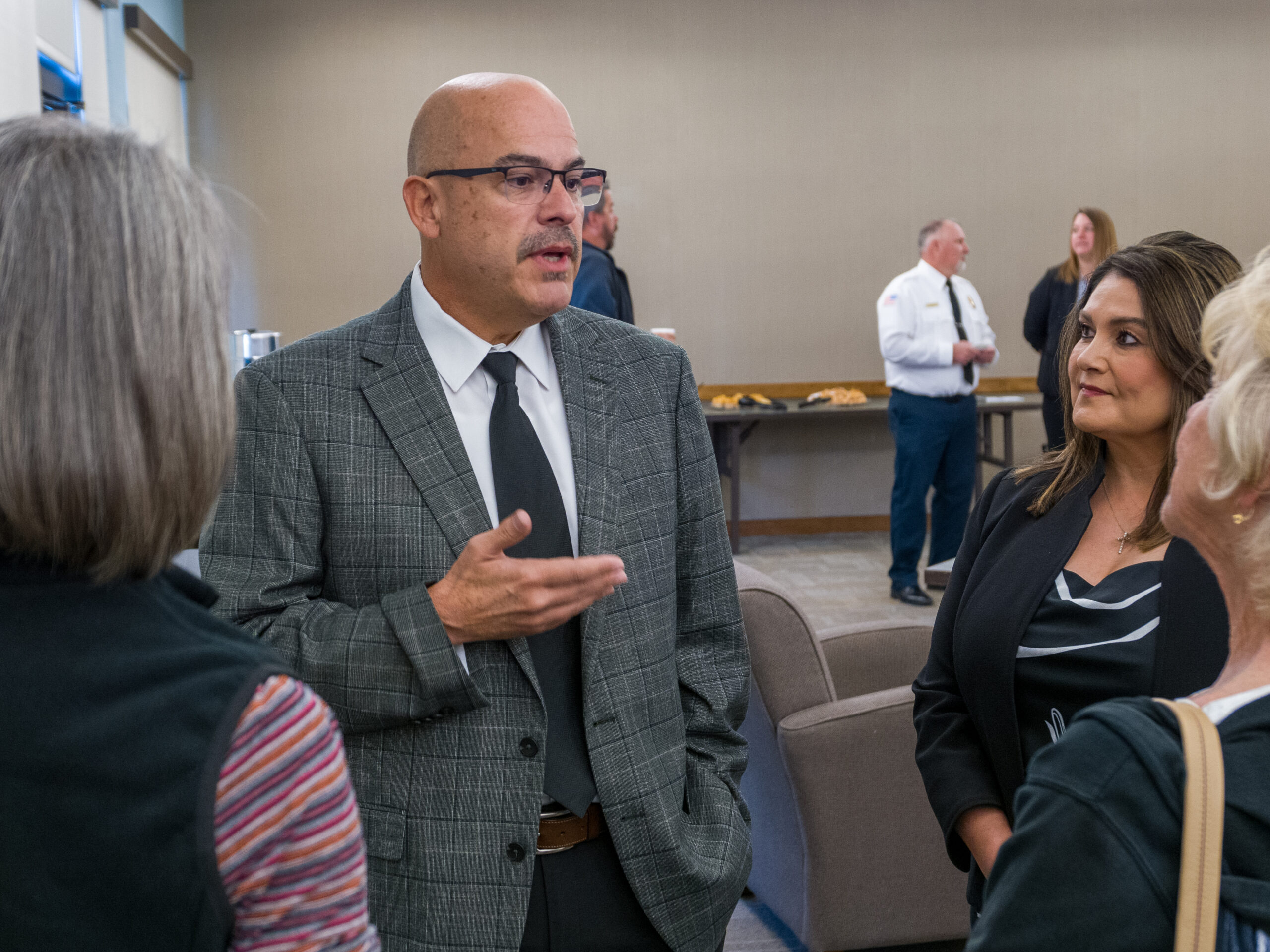Students from around the Verde Valley regularly work out their math muscles at Cottonwood Middle School, part of the Mathematical Olympiads CMS teacher and Olympiad organizer Mike Gilboy started for his highly performing math students.
Several CMS students participated in the Olympiad by taking a nationally ranked test Nov. 30. The test requires the students to apply math skills learned but not always practiced in the classroom, Gilboy said.
Ian Flannery, the eighth-grade trombonist, for example, said he competed in the Olympiads regularly since fifth grade. He is devoted to math because he finds it to be fun, one of the side effects that apparently comes from taking Gilboy’s math classes.
Aubriana Trejo, 14, said there wasn’t anything she didn’t like about math or the teacher who made it understandable. Not yet highly performing, Trejo said she would nevertheless love the opportunity to compete in the Olympiad.
The Olympiad is just one of Gilboy’s teaching strategies designed to take students to the next level. For example, his students collect and study data beyond the traditional book learning to keep the math they are learning relevant and fun, Gilboy said.
“You’ve got to think outside the box and try to find new ways to keep the highly performing students interested,” Gilboy said.
Math Olympiads went public in 1979. In 2010, nearly 150,000 students from 6,000 teams worldwide participated in the Olympiads. All 50 states and about 30 other countries were represented.
The Olympiad stimulates enthusiasm for math, introduces important math concepts, teaches problem-solving strategies, fosters creativity and ingenuity and offers the “thrill of meeting challenges,” according to the Math Olympiads official website.
The 35-member CMS team will take five tests consisting of five nonroutine math problems each. Every problem requires careful mathematical thinking and has a time limit. Each student, working alone, scores one point for each correct answer. Calculators are not permitted, Gilboy said.
For example, students were given six minutes Nov. 30 to answer the following question:
“Three roommates share the cost of a $300 television. The first pays one-half the total amount paid by the second and third roommates. The second roommate pays one-third the total amount paid by the first and third roommates. How much does the third roommate pay toward the television?”
The high scorer of each team receives a trophy. Each of the top 50 percent of all participants in each division receives an embroidered Olympiad patch. Each of the top 10 percent of all participants in each division receives a silver or gold pin. Each student who achieves a perfect score of 25 points receives a bronze medallion.
CMS students may not regularly win prizes, but the act of testing against other math students nationally acts like a stimulant for Gilboy’s students, who get to see how they stack up against their peers, he said.


